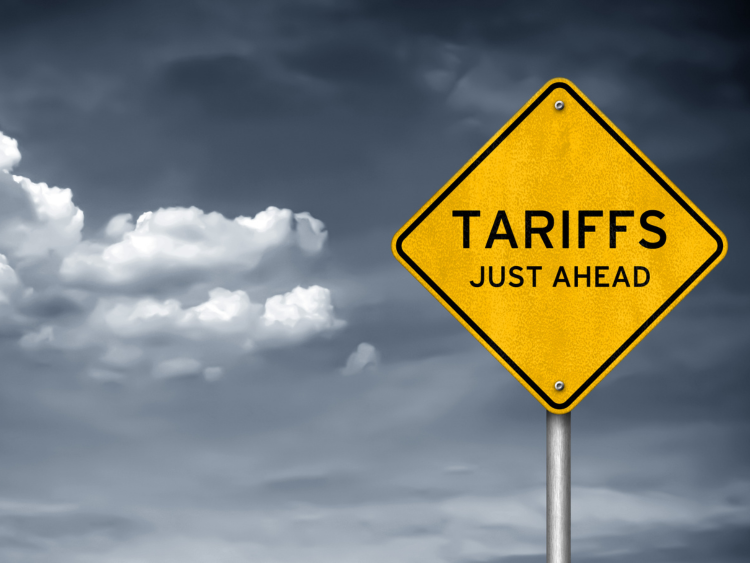Government/Policy

Leibowitz on Trade: Tariff Exclusion Requests by the Numbers
Written by Tim Triplett
November 4, 2018
Trade attorney and Steel Market Update contributor Lewis Leibowitz offers the following update on events in Washington:
Summary of Section 232 Exclusion Data
- As of early October, according to a comprehensive analysis by the Mercatus Center at George Mason University, there have been 30,916 tariff exclusion requests for steel products. There have been 14,356 objections, not all of which are meritorious.
- Also, as of early October, 8,542 requests were approved and 4,082 have been denied. That translates into a success rate of about 68 percent.
- The number of objections was about 46 per 100 requests. Many requests received multiple objections.
- Voestalpine High Performance Metals Corp. has filed over 2,500 requests, making it the firm with the most requests. It appears that many of that company’s requests remain undecided.
Here is a summary of the data as of Oct. 29, about three weeks after the Mercatus data were compiled:
- As of Oct. 29, I found the number of exclusion requests and objections combined had expanded to about 32,515, up 1,600 (about 5 percent) from early October.
- There were 14,485 objections, up 531 (about 3.6 percent) from early October.
- There were about 31 objections per request as of Oct. 29.
- The ratio of objections to exclusion requests between early October and Oct. 29, when I ran the numbers, was about 33 objections per 100 requests, a significant decline from the earlier numbers.
Maybe the objections are diminishing. But maybe not. We don’t know the total of objections that have been submitted, because there could be filings that contain the word “objection” but are not really objections to a specific exclusion request. For example, a filing might be a rebuttal to an objection.
Leading Objectors
Here is an estimate of objections from major steel producers. These have not been verified, because it is impractical to do so. The leading objectors, however, from big domestic producers are: Nucor, 5,954; U.S. Steel, 1,781; AK Steel, 2,399; and ArcelorMittal, 3,638.
Customs Review of Exclusion Requests
Before exclusions are finally granted, according to the Department of Commerce, U.S. Customs and Border Protection must review the requests to determine whether the exclusion can be effectively administered by Customs, and whether the tariff classification of the products is correct. Some requests have run into difficulty on these points, especially the tariff classification points.
For example, Sen. Claire McCaskill, the Ranking Democrat on the Senate Homeland Security Committee, wrote to the Secretary of Commerce and the Secretary of Homeland Security complaining that her constituents were denied exclusions even though no objections were submitted. According to Sen. McCaskill’s letter, Customs had reviewed 17,723 applications for exclusion, approving 12,667, and denying 5,056. This is also a denial rate of about 30 percent, which may be a coincidence, but may not. It is impossible to tell.
New Procedures
Since Sept. 11, 2018, new procedures have been instituted to allow for rebuttals by requestors and “surrebuttals” by objectors. There are no known exclusions that have been decided based on the new process. Therefore, we do not know whether the new procedures will result in more exclusions.
Which brings me back to Louis XIV.
The exclusion request process essentially defies analysis. Some requests have been denied despite the absence of objections. The Customs review process may explain some or all of these, but because the exclusion requests do not contain any information from Customs, it is impossible to know for sure.
The Commerce Department’s Bureau of Industry and Security has provided further information on the manner in which exclusion requests are evaluated. However, there is no set of facts that requires that agency (the part of the Commerce Department that often deals with export controls and rarely deals with steel trade issues) to approve an exclusion request. The absence of an objection does not require it—nor does the existence of an objection (or objections) require disapproval of a request.
The degree of discretion in approving or disapproving requests is essentially unchecked. That appears to be by design.
As pressure on the Department has grown, the number of exclusions approved has also grown. We may see refunds of past tariff payments at some point—there is encouraging evidence on that point, but the evidence is preliminary.
Lewis Leibowitz
The Law Office of Lewis E. Leibowitz
1400 16th Street, N.W.
Suite 350
Washington, D.C. 20036
Phone: (202) 776-1142
Fax: (202) 861-2924
Cell: (202) 250-1551

Tim Triplett
Read more from Tim TriplettLatest in Government/Policy

Price on Trade: The foolishness of free trade with controlled economies
It was only a matter of time before a shutdown happened. And, no, we aren’t talking about the federal government’s lapse in appropriations. On Oct. 9, Beijing announced a series of restrictions that will effectively shut down exports of rare earth elements, magnets, and certain downstream products vital to advanced manufacturing.

Trump pulls plug on trade talks with Canada after anti-tariff Reagan ad
US President Donald Trump took to social media late Thursday night to announce he was canceling trade talks with Canada.

Leibowitz: Renewed trade war with China over rare earths
On Oct.10, President Trump announced major increases in tariffs on Chinese goods. The trigger was a new regime of export controls on rare earth metals and products using those elements, including magnets, capital equipment, and catalysts for catalytic converters in cars and trucks.

Industry piles on new Section 232 steel derivative inclusion requests
The Department of Commerce received 97 submissions from producers, manufacturers, and groups seeking Section 232 tariff coverage for steel and aluminum derivative products.

Price on Trade: New EU steel tariffs don’t mean the US should weaken its stance
Any steel imports into the EU that exceed the new, lower quota level would be subject to a 50% tariff, which represents a major increase from the EU’s current 25% out-of-quota tariff. This move would largely align the EU’s steel tariff rate with Canada and the United States.
